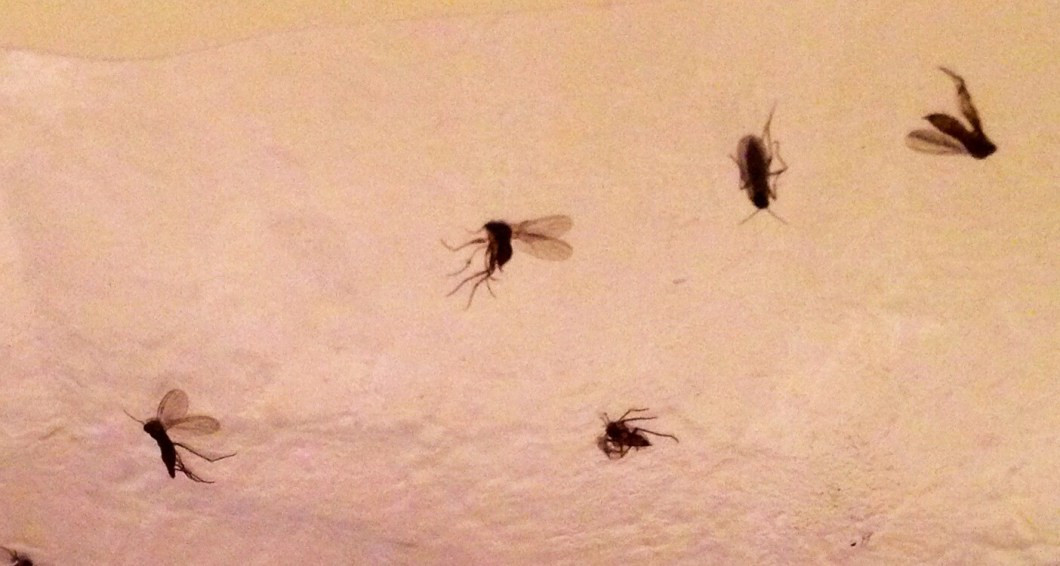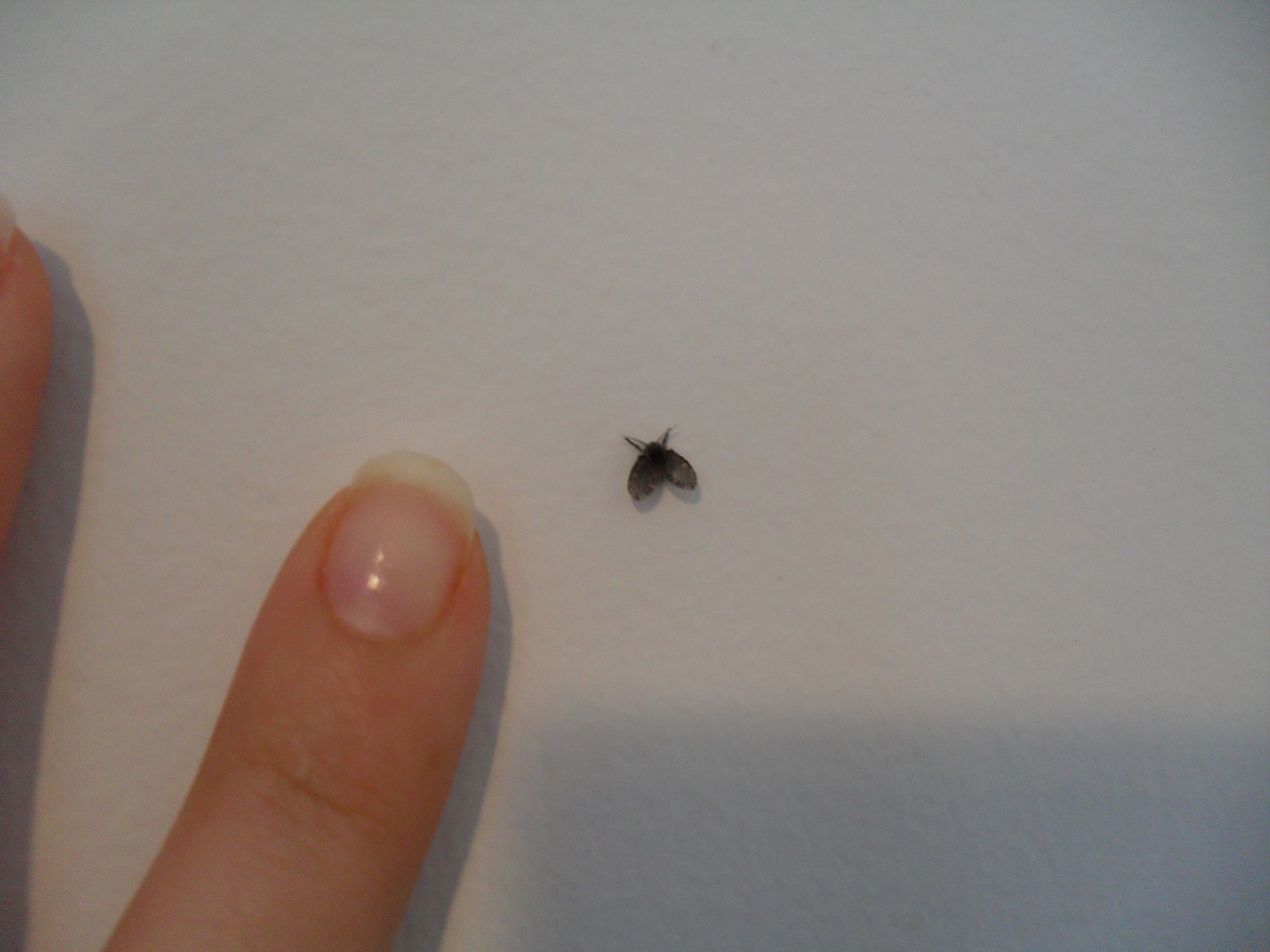Identifying the Tiny Red Flies

Tiny red flies in your bathroom can be a nuisance, but identifying them is the first step to controlling them. These flies are often mistaken for fruit flies or drain flies, but they have distinct characteristics.
Physical Characteristics of Tiny Red Flies
Tiny red flies are small, typically measuring 1/16 to 1/8 inch in length. They have a reddish-brown body with translucent wings. Their bodies are slender and segmented, and they have long, thin legs. Some species have a distinct reddish-brown head with prominent eyes.
Common Names and Scientific Names for Tiny Red Flies
Tiny red flies are commonly known as “moth flies” or “drain flies.” Their scientific name is Psychodidae, which encompasses a wide variety of species.
Comparing Tiny Red Flies to Other Bathroom Pests
- Fruit Flies: Fruit flies are smaller than tiny red flies and have a more rounded body shape. They are attracted to ripe fruit and decaying organic matter.
- Drain Flies: Drain flies are similar in size to tiny red flies, but they have a more fuzzy appearance and a darker coloration. They are often found near drains and wet areas.
Understanding the Source of the Flies: Tiny Red Flies In Bathroom

Tiny red flies, often called drain flies or moth flies, are a common nuisance in bathrooms. These small insects are attracted to moisture and decaying organic matter, making bathrooms a prime breeding ground. Understanding the source of these flies is crucial for effectively controlling an infestation.
Common Sources of Tiny Red Flies in Bathrooms
Tiny red flies thrive in damp, nutrient-rich environments. Some of the most common sources of these flies in bathrooms include:
- Sewage and Drains: These flies are often found in areas with poor drainage, such as slow-draining sinks, shower drains, or clogged pipes. They feed on the organic matter and bacteria that accumulate in these areas.
- Garbage: Overfilled trash cans or overflowing garbage disposals can attract tiny red flies. The decaying food scraps provide a perfect breeding ground for these insects.
- Decaying Organic Matter: Any decaying organic matter, such as spilled food, dirty laundry, or even damp towels, can attract and support the growth of tiny red flies.
Lifecycle and Breeding Habits
Tiny red flies undergo a complete metamorphosis, with four distinct stages: egg, larva, pupa, and adult.
- Eggs: Female flies lay their eggs in moist, organic matter, typically in drains, garbage, or other damp areas.
- Larvae: The eggs hatch into larvae, which are small, worm-like creatures that feed on decaying organic matter. They are typically found in moist, dark environments.
- Pupa: The larvae eventually pupate, forming a hardened shell. Inside the pupa, the fly undergoes a transformation into its adult form.
- Adult: The adult flies emerge from the pupae and are ready to mate and lay eggs. They are attracted to light and moisture, often congregating near drains, windows, and other damp areas.
Moisture and Warmth
Tiny red flies thrive in warm, humid environments. Bathrooms, with their constant exposure to moisture and warmth, provide ideal conditions for these flies to breed and multiply.
- Moisture: The presence of moisture, such as from leaking pipes, overflowing drains, or condensation, provides a breeding ground for tiny red flies. The larvae need moisture to survive and thrive.
- Warmth: Warm temperatures accelerate the life cycle of tiny red flies. In warmer environments, the flies can reproduce faster, leading to larger infestations.
Inspecting for Signs of Fly Activity
To effectively control a tiny red fly infestation, it’s essential to identify the source of the problem. Inspect the following areas in your bathroom for signs of fly activity:
- Drains: Check for slow-draining sinks, showers, or tubs. Look for signs of mold, mildew, or a slimy residue in the drains, which indicates the presence of organic matter and potential breeding grounds for tiny red flies.
- Garbage Cans: Ensure garbage cans are emptied regularly and properly sealed to prevent flies from entering and breeding.
- Under Sinks and Cabinets: Check for leaks, spills, or dampness under sinks and cabinets. These areas can provide a breeding ground for tiny red flies.
- Window and Door Frames: Inspect window and door frames for cracks or gaps that could allow tiny red flies to enter the bathroom.
- Towel Racks and Shelves: Damp towels or wet washcloths can attract tiny red flies. Ensure towels are dried properly and stored in a clean, dry environment.
Effective Solutions for Fly Control

Once you’ve identified the source of the tiny red flies and taken steps to eliminate it, you’ll need to implement effective solutions to control the flies and prevent future infestations. Here are some common household remedies and practical steps you can take.
Common Household Remedies
Common household remedies can help eliminate tiny red flies and prevent them from returning. These methods often involve creating traps, using sprays, or employing natural repellents.
- Fly Traps: Fly traps are effective in attracting and trapping flies. You can purchase commercially available fly traps or create your own using a simple DIY method. One common method is to use a jar with a small amount of apple cider vinegar and a few drops of dish soap. The flies are attracted to the vinegar, and the soap prevents them from escaping.
- Fly Sprays: Fly sprays are readily available at most grocery stores and hardware stores. They contain insecticides that kill flies on contact. However, it’s important to use fly sprays cautiously, especially in areas where children or pets may be present. Always read and follow the manufacturer’s instructions for safe use.
- Natural Repellents: Some natural repellents can help deter flies. For example, the strong scent of essential oils like peppermint, eucalyptus, and tea tree oil can repel flies. You can create your own spray by mixing a few drops of essential oil with water in a spray bottle. Other natural repellents include garlic, lavender, and basil. You can place these herbs around your bathroom or grow them in pots near the windows.
Cleaning and Sanitizing the Bathroom, Tiny red flies in bathroom
Thorough cleaning and sanitizing are essential to eliminate the source of the flies and prevent future infestations. This involves cleaning all surfaces, removing organic matter, and disinfecting to kill any remaining fly eggs or larvae.
- Clean All Surfaces: Start by cleaning all surfaces in the bathroom, including the sink, toilet, bathtub, shower, floor, and walls. Use a cleaning solution that is effective against bacteria and mold. Pay particular attention to areas where moisture accumulates, such as around the drain and under the sink.
- Remove Organic Matter: Remove any organic matter that may be attracting flies, such as hair, food debris, and mildew. Empty the trash bin regularly and clean the garbage disposal. Pay attention to areas where water can collect, like the shower floor, and remove any mold or mildew growth.
- Disinfect: After cleaning, disinfect all surfaces using a bleach solution or another disinfectant product. This will kill any remaining fly eggs or larvae. Be sure to follow the manufacturer’s instructions for safe and effective use.
Sealing Cracks and Crevices
Tiny red flies can enter your bathroom through cracks and crevices in the walls, floor, or windows. Sealing these entry points can help prevent future infestations.
- Inspect for Cracks and Crevices: Carefully inspect the walls, floor, and windows for any cracks or crevices. Pay attention to areas around plumbing fixtures, vents, and electrical outlets.
- Seal Cracks and Crevices: Use caulk, sealant, or putty to seal any cracks or crevices. Make sure to apply the sealant evenly and smoothly. Allow the sealant to dry completely before using the bathroom.
Proper Disposal of Garbage and Food Waste
Tiny red flies are attracted to garbage and food waste. Proper disposal of these items can help reduce attractants and prevent future infestations.
- Empty Trash Bins Regularly: Empty trash bins regularly, especially those in the bathroom. Make sure to dispose of garbage properly in sealed bags. Avoid leaving food scraps or other organic matter in the trash bin.
- Store Food Properly: Store food properly in airtight containers to prevent flies from accessing it. Keep food items off the floor and away from areas where flies may congregate.
Tiny red flies in bathroom – Tiny red flies in the bathroom can be a real nuisance, especially when they seem to appear out of nowhere. While tackling the source of the flies is essential, you can also enhance the overall aesthetic of your bathroom with stylish bathroom curtain rod covers.
These covers not only add a touch of elegance but can also help to conceal any unsightly rust or damage on the rod, creating a more polished look. Once you’ve addressed the fly problem and given your bathroom a stylish update, you can enjoy a clean and inviting space.
Those tiny red flies in the bathroom can be a real nuisance, especially when you’re trying to relax after a long day. While you’re tackling that pesky fly problem, you might also want to consider upgrading your bathroom decor with stylish new bathroom curtain rods india.
A fresh look can make a big difference in how you feel about your space, and maybe even help distract from those annoying flies.